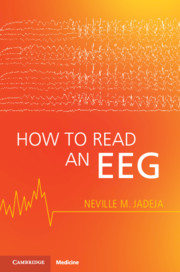Book contents
- How to Read an EEG
- How to Read an EEG
- Copyright page
- Dedication
- Contents
- Figure Contributions
- Foreword
- Preface
- How to Read This Book
- Part I Basics
- Part II Interpretation
- Chapter 9 Approach to EEG Reading
- Chapter 10 Background
- Chapter 11 Foreground (How to Describe an Abnormality)
- Chapter 12 Common Artifacts
- Chapter 13 Normal Variants
- Chapter 14 Sporadic Abnormalities
- Chapter 15 Repetitive Abnormalities
- Chapter 16 Ictal Patterns (Electrographic Seizures)
- Chapter 17 Activation Procedures
- Part III Specific Conditions
- Appendix How to Write a Report
- Index
- References
Chapter 17 - Activation Procedures
from Part II - Interpretation
Published online by Cambridge University Press: 24 June 2021
- How to Read an EEG
- How to Read an EEG
- Copyright page
- Dedication
- Contents
- Figure Contributions
- Foreword
- Preface
- How to Read This Book
- Part I Basics
- Part II Interpretation
- Chapter 9 Approach to EEG Reading
- Chapter 10 Background
- Chapter 11 Foreground (How to Describe an Abnormality)
- Chapter 12 Common Artifacts
- Chapter 13 Normal Variants
- Chapter 14 Sporadic Abnormalities
- Chapter 15 Repetitive Abnormalities
- Chapter 16 Ictal Patterns (Electrographic Seizures)
- Chapter 17 Activation Procedures
- Part III Specific Conditions
- Appendix How to Write a Report
- Index
- References
Summary
Activation procedures are used to elicit epileptic activity. Hyperventilation and photic stimulation are commonly used activation procedures. Hyperventilation is contraindicated in cerebrovascular disease. The normal hyperventilation response consists of a high-amplitude, frontally dominant, generalized slowing (called buildup). This is age dependent and may be absent in older individuals. Hyperventilation provokes absence seizures in childhood absence epilepsy (CAE). Prolonged buildup may be seen in Moya-Moya disease. Photic stimulation normally results in symmetric, occipital dominant, repetitive sharps at the flash frequency or a slower harmonic (called driving). Photo paroxysmal response consists of induction of epileptic discharges with photic stimulation, while photo convulsive response results from a seizure elicited during photic stimulation.
Keywords
- Type
- Chapter
- Information
- How to Read an EEG , pp. 160 - 168Publisher: Cambridge University PressPrint publication year: 2021

